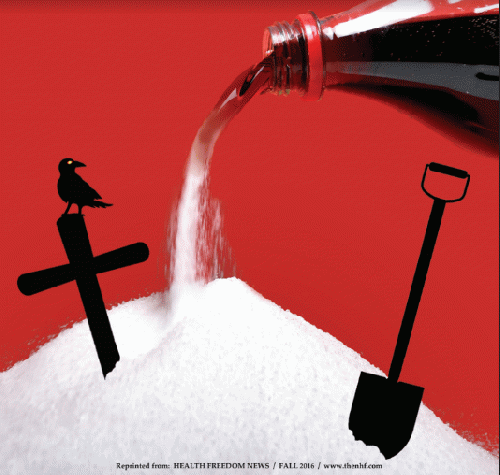The author of this article discusses in it the renowned Italian Cancer Researcher, Dr. Morando Soffritti, Director of the Collegium Ramazzini, an academy of 180 internationally renowned experts in occupational and environmental health from over 30 nations.
reprinted with permission from ThenHF.com
On November 15, 2016, the California Environmental Protection Agency's Office of Environmental Health Hazard Assessment's (OEHHA), Carcinogen Identification Committee (CIC) met to decide whether to list aspartame as a carcinogen. Just to be clear, no listing decisions are made at meetings such as this one; instead, the CIC members "prioritize" the substance and that then determines whether or not the substance at issue has a chance at being put on California's "Prop 65" list of known carcinogens.
Remember, Proposition 65 (or "Prop 65" as it is now popularly called) was the referendum measure passed into law by California voters in November 1986, thirty years ago. Prop 65 requires, among other things, that all known carcinogens be declared (usually on food and drink labels) to consumers. It is so pervasive that even residents in other States will often see Prop-65 warnings about carcinogenicity on food and drink labels or on websites when ordering.
The CIC Voting Process
Some individuals submitted written comments about aspartame prior to the meeting. For those who did, the comments went to the CIC committee and have been posted on the OEHHA website. The first thing the committee members do is vote. It can be no priority or low, medium or high priority. After the speakers present their view, they vote again. This is the process for prioritizing the substance under consideration.
The CIC is a committee of eight and, of those eight, six were present. After the last vote at this meeting, I recall there was medium, medium to high, high to medium, and two highs. It can be checked when added to their website. The vote was declared a draw, although it was actually a win for the people. If the vote had been no priority or all lows, any further consideration of aspartame as a carcinogen would have ended. The vote means they will continue the investigation. If the CIC gets the real facts, aspartame can be classified as a carcinogen, which is what aspartame is. FDA's Dr. Adrian Gross admitted to Congress on August 1, 1985, that aspartame violated the Delaney Amendment because it causes cancer.
The Speakers
The speakers before the Committee were CSPI (Center for Science in the Public Interest), a Dr. Adamson, Calorie Control Council, and me. We, the speakers, were given five minutes each to speak. In preparation for my presentation, I made sure to arrive at the Committee meeting first and laid in front of each of the Committee members the reprint of the NHF article, front page and all, that I had written on "Rotgut Aspartame."
When they opened it, they also saw a paper on aspartame metabolism and methanol I had written called Eat, Drink, and Be Buried as well as the one I had taken from Dr. Roberts' book and re-written specially for them on carcinogenic mechanisms.
www. rense.com/general96/posscarcino.htm
(Note: You can view every article as one long page if you sign up as an Advocate Member, or higher).






